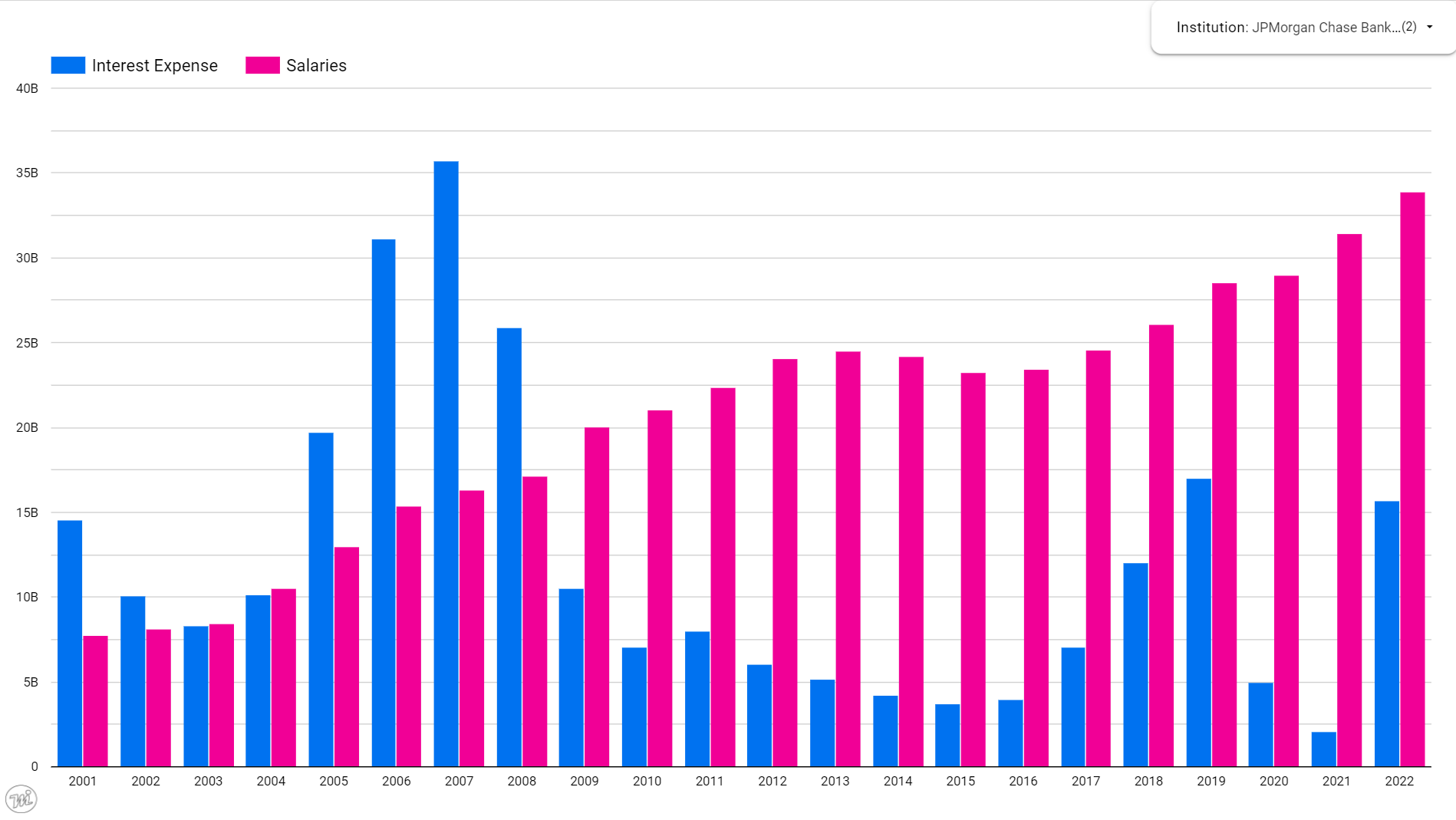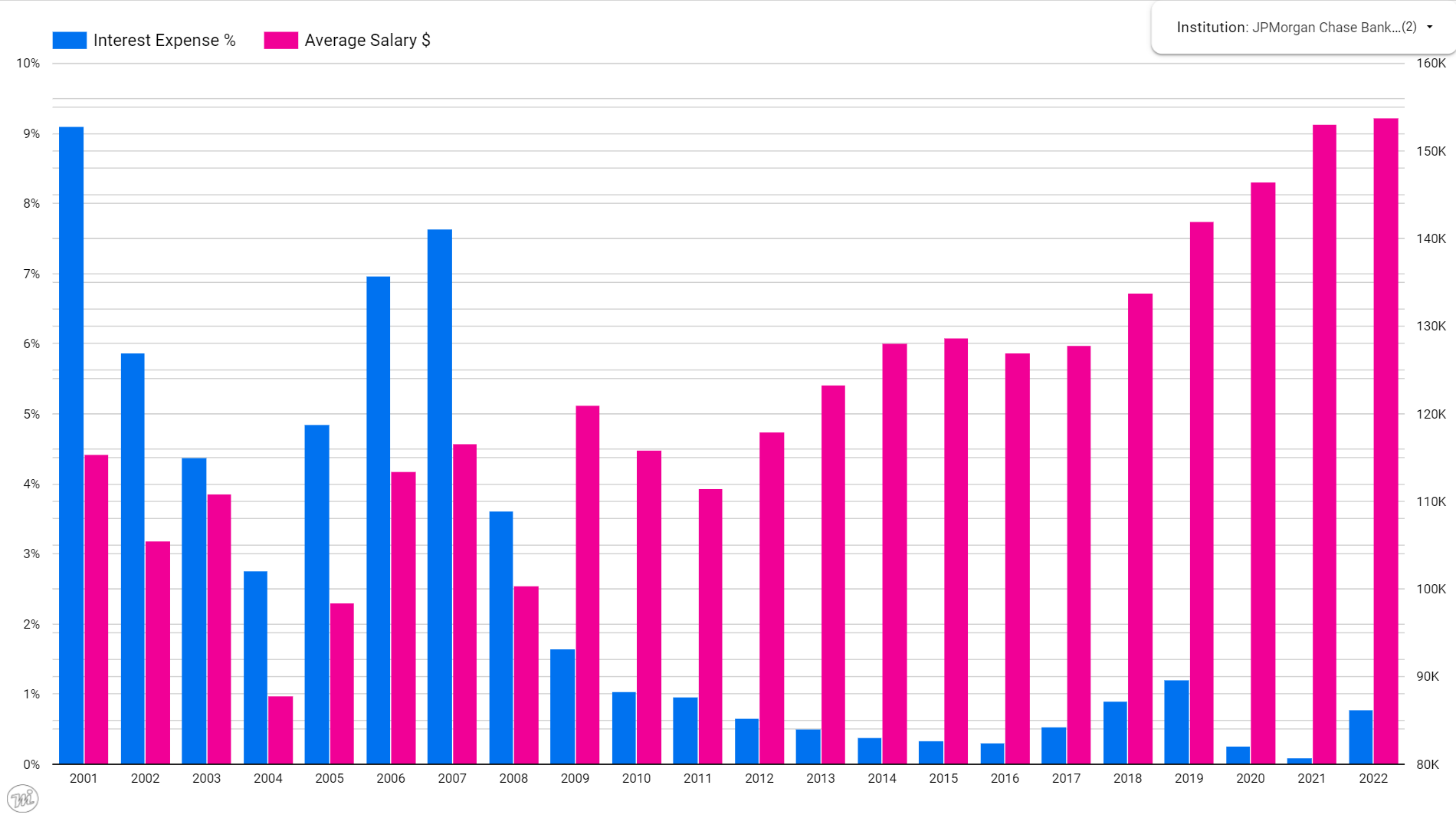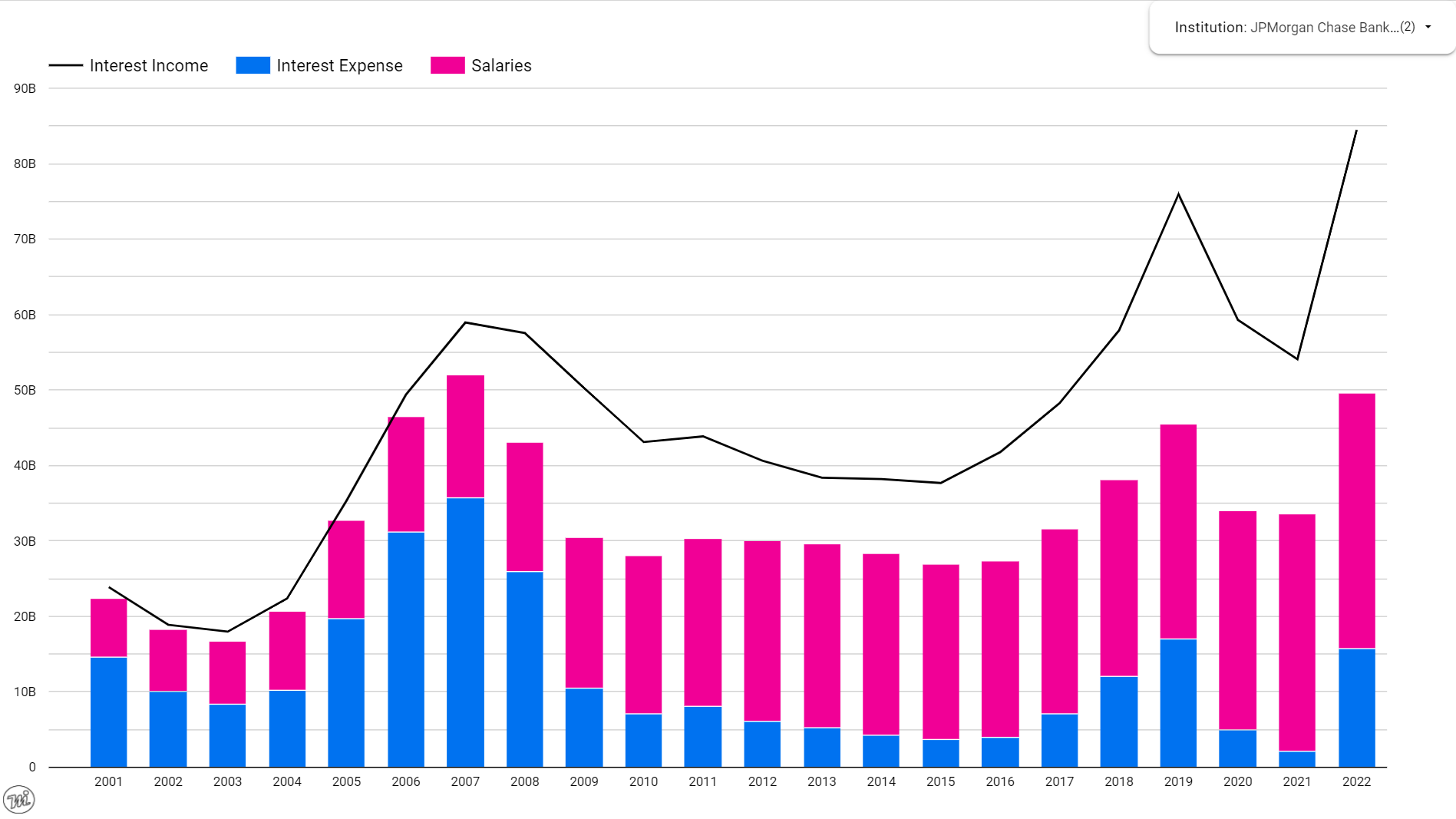Large banks pay more salaries, than interest. Does it matter?
In 2022, JPMorgan Chase Bank paid $34 billion in salaries to employees vs. $16 billion in interest to depositors.

In 2022, JPMorgan Chase Bank paid $34 billion in salaries to employees vs. $16 billion in interest to depositors.
Since 2007, JPMorgan Chase Bank decreased 10x interest paid on deposits, while increasing 32% salaries, accounting for inflation on salaries, but not on deposits.

Compared to 2007, the cost of doing business for JPMorgan Chase Bank, represented by the sum of interest expense and salaries decreased 5% in 2022, while interest income increased 43%.

Bank of America and Wells Fargo were equally rewarding for employees, while unyielding for deposits, offering no returns for depositors.
Goldman Sachs Bank and Ally Bank countered the trend, by offering high-yield deposit accounts, attracting $500B in deposits.

With no incentive for depositors to save cash at large banks, what keeps them safe from deposit runs?
Information asymmetry, fear and friction.
However, not for long.
Social media, X in particular, rapidly reduces information asymmetry.
Treasury bills, offering virtually unlimited protection, eliminate fear, while providing incentive by offering 500x better yields.
Real-time money movement with a single tap, dissolves friction.
Large banks keeping more in the pockets of employees, then accruing on deposits for customers, worked during low interest rates.
Today, it is different.
The Federal Reserve and the Treasury offer yields greater than 5% and virtually unlimited protection, competing with Banks for your cash yielding 0.01% and insured only up to $250K.
Without deposits, there is no bank.